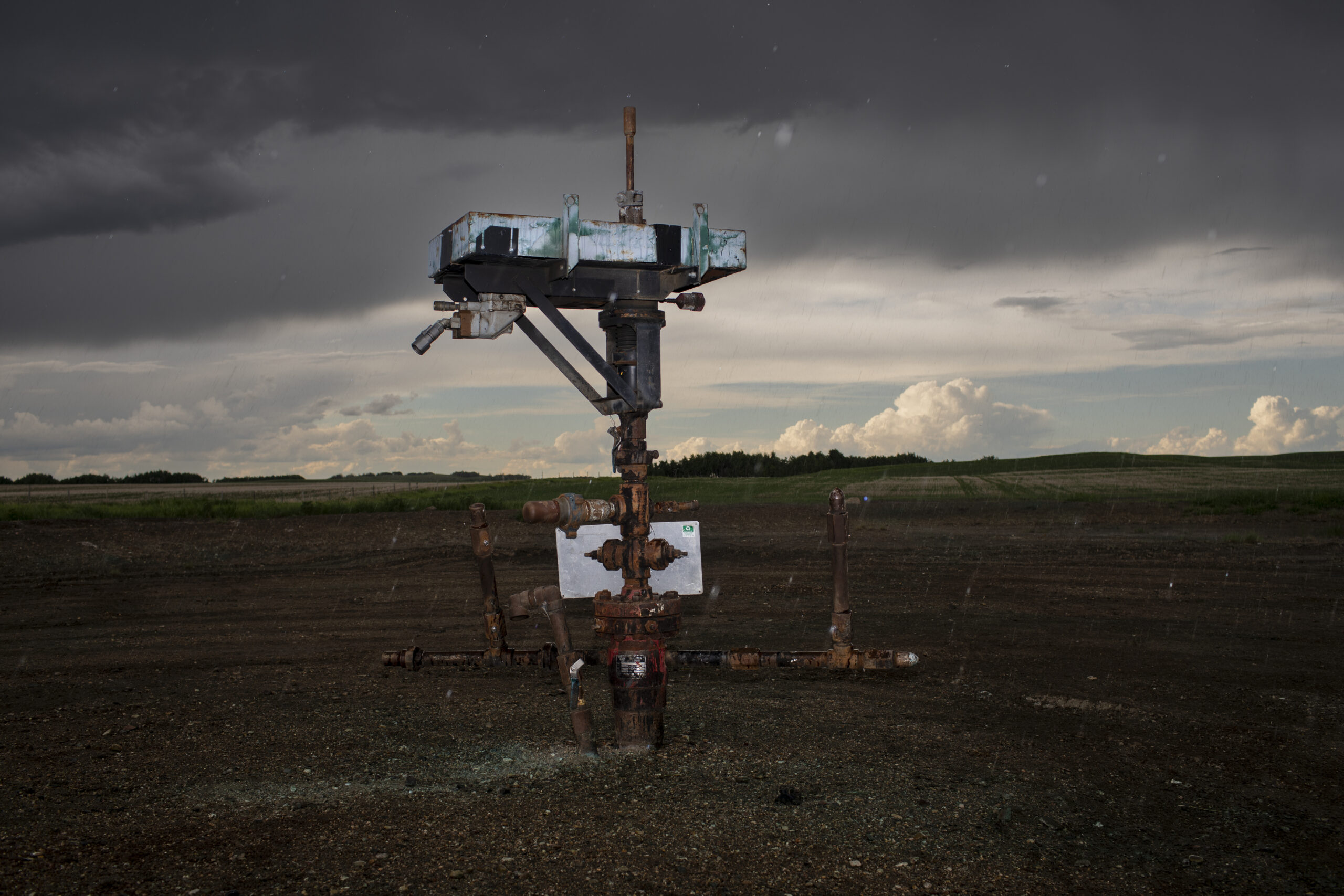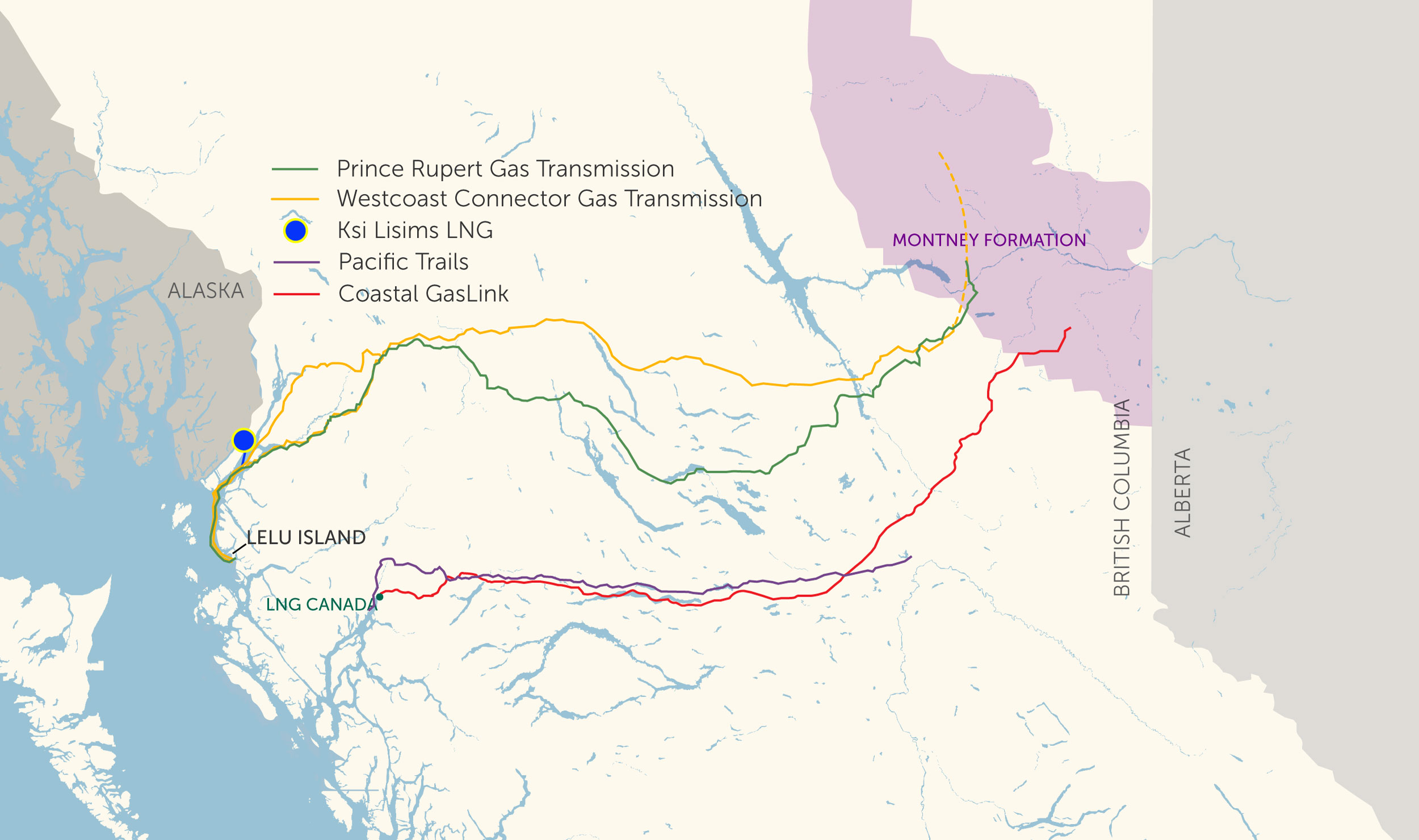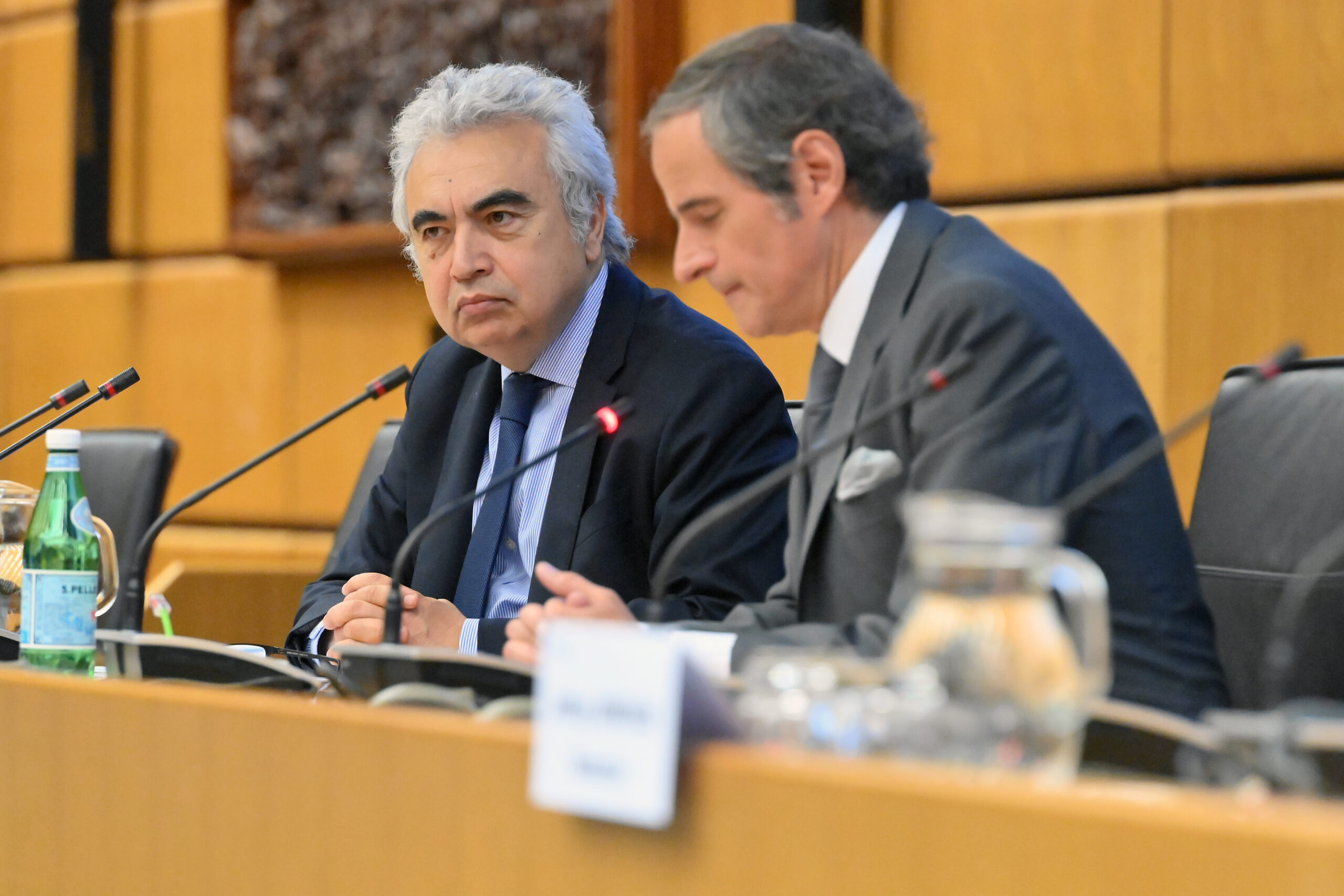
The Right Honourable Mary Simon aims to be an Arctic fox
Canada’s first-ever Indigenous governor general doesn’t play favourites among our majestic natural wonders, but she...
Invisible to the naked eye, undetectable by smell and 80 times more powerful than carbon dioxide for its short-term warming impact on the climate, methane is explosive, toxic and can make helicopters fall out of the sky. It’s like something out of a superhero movie — or a bad dream.
About half of Canada’s reported methane emissions are produced by the oil and gas industry, both from regular operations and leaks. But much of the climate damage caused by the sector’s methane pollution goes undetected due to weak regulations.
As the country’s westernmost province prepares for a boom in the gas sector, with LNG Canada and the controversial Coastal GasLink pipeline set to start operations mid-decade, B.C. is planning to increase oversight.
During the international climate conference in Egypt last November, Canada proposed a new regulatory framework on methane aimed at driving “as many individual sources as possible toward zero emissions” and expanding its scope to eliminate any exemptions the sector was benefitting from.
Ari Pottens, Canadian campaign manager with the U.S.-based Environmental Defense Fund, said the federal framework is promising and sets a benchmark for B.C. regulations. The province will have to follow the federal regulations or sign what’s called an equivalency agreement with the federal government, he explained. The closer the respective regulations are to each other, the easier they are to enforce.
“We think that any provincial regs should match the ambition found in this proposed framework,” he said in an interview. “It’s close to some of the best practices that we’ve seen in the U.S.”
The federal proposal includes increasing inspections of facilities, including wells that aren’t in operation, and requiring all operators to have a plan for how they’re going to deal with fugitive emissions, or leaks.
In 2021, B.C. committed to cut methane emissions by 75 per cent below 2014 levels by 2030 and nearly eliminate them by 2035. To tackle the challenge, the B.C. Energy Regulator (formerly known as the B.C. Oil and Gas Commission) is currently asking for feedback to inform the process.
“Right now, in B.C. you only have to do a comprehensive inspection of facilities three times a year, but the new federal regulations are much more stringent,” Pottens said. “One of the things that would make sense would be to increase the level of [B.C.’s] inspection requirements, so that it more closely mirrors what the federal government has proposed.”
One of the biggest challenges facing the sector is the “rapid detection and elimination of fugitive emissions,” the B.C. Energy Regulator told The Narwhal.
Remember, methane is invisible. And the majority of gas extraction and transport in B.C. takes place in the province’s northeast, a sparsely populated and remote region.
In 2021, Matthew Johnson and David Tyner, researchers with the Energy and Emissions Research Lab at Carleton University in Ottawa, found that B.C. oil and gas facilities were emitting up to 2.2 times more methane than federal estimates.
“Over the time since we’ve started to deal with methane, our ability to detect and measure it has vastly improved,” Tom Green, senior climate policy advisor with the David Suzuki Foundation, told The Narwhal in an interview. But much of the province’s accounting of methane emissions still relies on assumptions, rather than actual measurement and Green said implementing “large scale independent monitoring” would ensure B.C. has an accurate picture of the problem.

Pottens said industry compliance is a major issue.
A 2022 report by St. Francis University researchers on behalf of the Methane Emissions Research Collaborative noted only 60 per cent of operators completed leak detection and repair surveys in 2020. And when operators did complete the surveys and found problems, many took longer than 30 days to plug the holes.
“If you have a leak, 40 per cent of the time it’s not being repaired in the correct way or in a timely manner,” Pottens said. “Tightening up the regulations to try to strengthen compliance when there needs to be a repair, when a leak is found, seems like a no-brainer.”
Satellite technology could be a game-changer. The Carleton study showed there was a big gap between detection methods on the ground and flyover surveys. But regular aerial surveys in northeast B.C. are expensive and impractical. Satellites not only drop a pin on major industrial sources of fugitive emissions, they can also determine the rate of the leak, prioritizing the biggest polluters and keeping emissions accounting accurate.
“In order to understand and quantify B.C.’s industrial emissions, B.C. is using a range of tools, including aerial detection, land-based detection and surveys and satellites,” the regulator’s spokesperson said. “The province, through the Ministry of Environment and Climate Change Strategy, has a contract in place to detect methane emissions by satellite at oil and gas facilities, coal mines and landfills.”
The ministry confirmed its contract is with Montreal-based GHGSat, which already has six methane-detecting satellites orbiting the planet. MethaneSat, a collaboration between the Environmental Defense Fund and the New Zealand Space Agency, aims to launch its first later this year.
“British Columbia continues to lead the country in methane emissions reduction and we are on track to exceed the targets we set in 2018 to reduce emissions by 45 per cent by 2025,” Josie Osborne, Minister of Energy, Mines and Low Carbon Innovation, told The Narwhal in an emailed statement. Osborne’s ministry said the province is working with experts, industry, non-profits and environmental groups to make sure emissions aren’t being missed in the accounting.

Regulations alone may not be enough to catch and curb emissions as more projects come online. The province has delayed a decision about whether it will green-light Cedar LNG, a majority Haisla-owned project proposed for Kitimat, B.C. The government was supposed to make a decision by the end of 2022 but has said it is taking extra time to “thoroughly review” the project. B.C. already gave the thumbs up to Woodfibre LNG in Squamish, B.C. in 2015. The province also approved three other gas pipelines in the north: Prince Rupert Gas Transmission, owned by TC Energy, the same company behind Coastal GasLink, and two Enbridge projects, Westcoast Connector and Pacific Trails.
“The province really needs to be doing everything as fast as possible to reduce methane emissions, while also abandoning its plans to expand fracking and gas transportation that leads to these methane emissions,” Peter McCartney, climate campaigner with the Wilderness Committee, said in an interview.
The B.C. regulator said regulatory changes will apply to liquefaction facilities, including LNG Canada, pipelines and all upstream facilities.
But McCartney worries the math won’t add up as new wells are drilled and projects come online.
“There’s sort of a twofold piece on it,” he said. “Yes, patch the holes, fix the pumps and incomplete combustion at flare stacks — all these various ways that they’re looking at reducing methane emissions. But if they’re only pulling more of this stuff out of the ground, more of it is going to end up in the atmosphere all along the supply chain.”

Public appetite for new LNG projects is declining, according to a recent Clean Energy Canada survey. The study, conducted in February, found a majority of British Columbians would rather see the provincial government direct its investments and support to clean energy projects.
Green said that new and stricter regulations are important and B.C. should be doing everything it can to get emissions down as quickly as possible but the province also needs to think longer term and pivot towards clean energy opportunities in partnership with Indigenous nations.
“We’re going through a classic boom and bust,” he said. “I get that people are benefiting from all the jobs that are up in the northeast of the province and in Kitimat, building LNG Canada — those are real well-paying jobs. But we’ve got to also think of the long run and start that transition, or start a rational build-out of what the economy of the future is.”
Domestic responsibility for methane is part of an international effort. According to the Global Methane Assessment, a 2021 report published by Climate and Clean Air Coalition and the United Nations Environment Programme, cutting global emissions by 45 per cent would save the planet from around 0.3 C of warming by the 2040s and annually prevent “255,000 premature deaths, 775,000 asthma-related hospital visits, 73 billion hours of lost labour from extreme heat and 26 million tonnes of crop losses globally.”
Green calls methane a “low-hanging fruit” partly because industry has a baked-in incentive to prevent leaks.
“By capturing that methane and putting it in the pipe, they do get to sell it,” he explained, referring to International Energy Agency analysis that shows 40 per cent of emissions can be cut using existing technologies at no net cost to companies.
Green added there are additional economic benefits associated with reducing the frequency of costly climate disasters. “It’s a moral case as well,” he said. “Companies shouldn’t be using the atmosphere as a dumping ground for a climate accelerant.”
According to Fatih Birol, executive director of the International Energy Agency, “methane cuts are among the cheapest options to limit near-term global warming.”
“There is just no excuse,” Birol said in a February press release. “The Nord Stream pipeline explosion last year released a huge amount of methane into the atmosphere. But normal oil and gas operations around the world release the same amount of methane as the Nord Stream explosion every single day.”
“Fossil fuel producers need to step up and policy makers need to step in — and both must do so quickly.”

B.C. appears to be getting a head start by launching its regulatory review. The federal government has not yet published new standards, but the province is gathering technical feedback to make sure it’s ready to identify all of the sources of emissions and ensure they are covered by regulatory changes. The provincial regulator said on top of existing technologies, new ones are under development.
“Some examples include vapour recovery units, enclosed combustors, electrification, instrument air systems and continuous methane emissions monitors,” a spokesperson wrote in an email. Anything that gets the job done is on the table. For example, the spokesperson said the regulator could establish “an emission threshold” or it could require operators to use things like optical gas imaging cameras in monitoring.
The Canadian Association of Petroleum Producers didn’t directly answer whether it was participating in the provincial review but said it supports a “flexible, results-oriented and streamlined approach to reducing emissions.”
“We look forward to working with the British Columbia Energy Regulator to identify opportunities to further reduce industry’s methane emissions while creating an investment environment that supports the continued development of Canada’s oil and natural gas resources,” Jay Averill, a spokesperson with the industry group, wrote in an email to The Narwhal.
Once it has received submissions, the regulator will produce a plan for more public involvement. A spokesperson with the provincial agency told The Narwhal engagement is focused on “technical details” and anticipates the process will continue throughout 2023.
Get the inside scoop on The Narwhal’s environment and climate reporting by signing up for our free newsletter. A $335 million funding commitment to fund...
Continue reading
Canada’s first-ever Indigenous governor general doesn’t play favourites among our majestic natural wonders, but she...

In Alberta, a massive open-pit coal mine near Jasper National Park is hoping to expand...

A trade war could help remake B.C.’s food system, but will family farmers be left...
